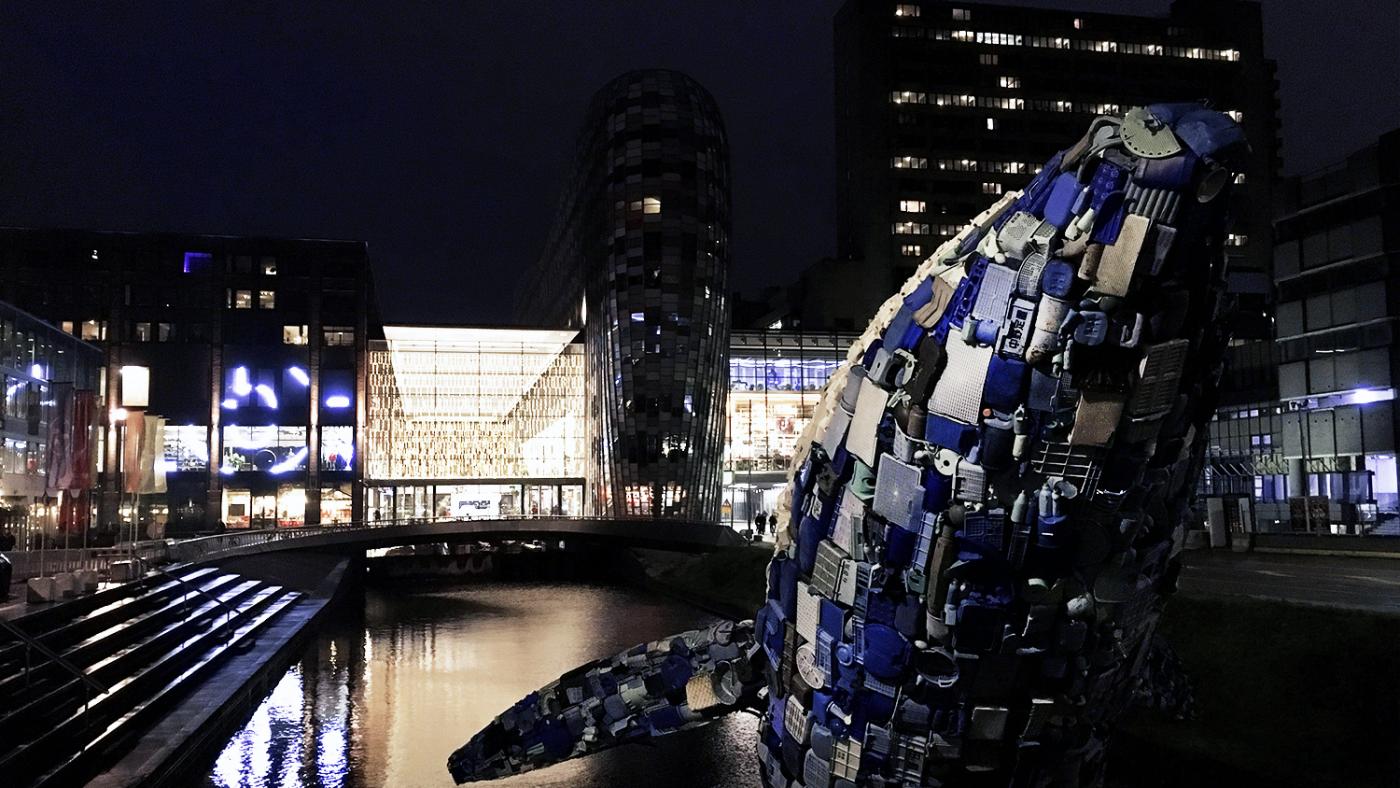‘Giant whale in the canal won’t solve the problem of plastic waste’

In front of TivoliVredenburg, an extraordinary animal is swimming in the canal: a giant plastic whale can be seen jumping out of the water. The art installation draws attention to the issue of plastic waste polluting our oceans. The whale draws quite the audience. “Well, it is rather noticeable,” says Jeroen Bergveld, who’s taken a detour just to see the whale. “By chance, I’d seen it in Bruges as well when it was there, and I love that it’s here now.”
Hurry on
Most people take a few seconds to look at the whale, and hurry on. A few take some photos and pause a little longer. Parents with children especially take the time to admire the artwork; students also tend to linger longer.
“It’s a very impressive artwork, because it’s so big. I really like it,” says history student Matthias. When asked whether it’s relevant, he says: “I believe most people in Utrecht know you shouldn’t just throw away plastic, so perhaps it would’ve been better if it had been placed elsewhere.”
Frans Goedhart from Utrecht is of the same opinion: “It’s a nice idea. But it doesn’t solve the problem. You need to deal with the countries in Asia; I think they’re the biggest plastic polluters. So perhaps the whale should be there instead.”
Plastic in the canal
Reinier Hietink and Jos Casparie, commuters in Utrecht, think there is a point to the artwork. “Look around the artwork and you see a lot of plastic floating in the water. That tells you not all people have this level of awareness yet, and there’s still a long way to go. You also start to reflect on yourself, whether you’re doing the right things.”
Not everyone is happy with the giant animal in front of TivoliVredenburg. “Why does it always have to be art? You have to talk to people directly. Look,” pointing at the ground, “there’s rubbish here everywhere. I don’t think this is making people think, ‘oh, I shouldn’t throw my rubbish in the streets,’” says Utrecht citizen Jan Geytenbeek.
International student Niklas says it’s mostly ‘very useful’ that there’s attention for the plastic waste issue here, too. “Any and all attention to the plastic issue is very necessary. I think it’s good that we’re drawing attention to plastic here, too. Every little bit helps. That’s the only way we can solve the issue.”
Washed ashore in Hawaii
The official opening ceremony for the artwork was held on January 18. The whale will remain in Utrecht until June – the university can’t provide an exact date yet. The artwork is constructed from 5 tonnes of plastic waste washed ashore in Hawaii. The whale was brought to Utrecht for a number of activities Utrecht University is organising on sustainability.
The Sustainability Conference 2019 is one of these activities. Several prominent speakers are invited to come talk about the topic. Guests include Sheila Jasanoff, professor at Harvard University; and Diederik Samson, a Dutch politician who was in charge of the Climate Table Built Environment. The conference takes place on January 24.
Impact Night
Another one of the activities is Impact Night. During this event, people will brainstorm on the big themes that are important to the future, including sustainability. The Impact Night 2019 will be held on March 22, 2019.
Utrecht University conducts a lot of research on the consequences and causes of plastic in the oceans. The university states that for this reason, the artwork complements the events nicely. Marleen van Rijswick, professor of European and national water law, brought the whale to Utrecht.
The whale is officially called ‘The Skyscraper’, and is the brainchild of New York-based architecture firm Studiokca. It was designed specially for the Triennial in Bruges, and of course can now be temporarily found in Utrecht.